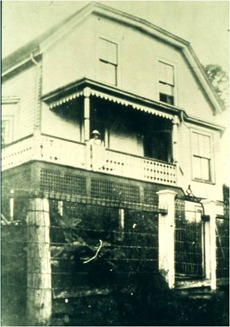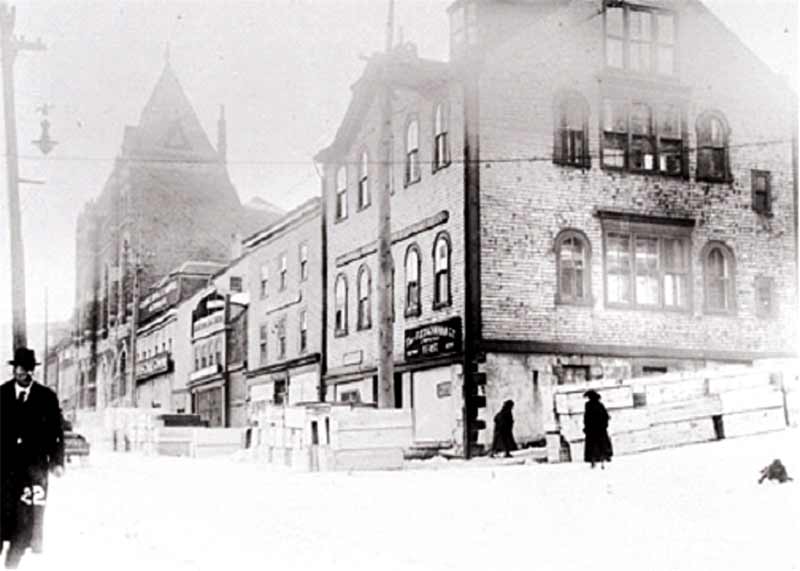 Arthur Lismer was the principal of the Victoria School of Art and Design from 1916 to 1919. In 1920, he would become a founding member of the Group of Seven.
Arthur Lismer was the principal of the Victoria School of Art and Design from 1916 to 1919. In 1920, he would become a founding member of the Group of Seven.
He served as principal of the Victoria School of Art and Design for only three years, yet Arthur Lismer’s tenure has made a lasting impression.
Originally from Sheffield, England, Lismer came to Halifax and the Victoria School (now NSCAD University) in 1916. The school, then almost 30 years old, was in a state of decline. Facilities were in disrepair and enrolment was at an all-time low: just 12 students.
But even more disconcerting, says Gemey Kelly in a 1982 catalogue essay for the exhibition titled Arthur Lismer: Nova Scotia, 1916-1919 that she curated for the Dalhousie Art Gallery was the attitude of school’s directors who regarded art education as suitable only for the elite.
In Lismer’s own words: “The school has been allowed to fall into disuse mainly on account of the lack of interest of its directors who regard art as an exclusive & cultured subject for the edification of the few—& the fewer the students the greater their pride in their connection with it, & its exclusiveness.”
That attitude couldn’t have been further from Lismer’s own— “art is the normal and rightful heritage of every individual,” he wrote in 1917. His first task on becoming principal was to recruit students of different backgrounds. Within the first year, he managed to attract 72 students and taught all of the classes. By his second year, the school was offering classes in drawing, design, painting and colour theory, and another teacher, painter Edith Smith of Halifax, was hired to help with the teaching.
But the school was not his only concern. At the same time as he was rejuvenating the art school, he discovered the Nova Scotia Museum of Fine Arts (now the Art Gallery of Nova Scotia) was also suffering from neglect. In reviewing the meager collection, Lismer set about bringing in an exhibition of contemporary Canadian art from the National Gallery. The opening in February of 1917 attracted some 200 people, who viewed paintings by Ernest Lawson, Tom Thomson, Clarence Gagnon, Henry Rosenberg and some by Lismer himself. According to the Halifax Herald, “it may be said here that Mr. Lismer’s personality is already telling, although he has spent but a few months with us, in an increased number of students at the school and increased interest on the part of the province in its work.”
 The house Arthur Lismer lived in with his wife Esther and daughter Marjorie is on Cliff Street in Bedford.
The house Arthur Lismer lived in with his wife Esther and daughter Marjorie is on Cliff Street in Bedford.
Even with the concerns of the school and museum to occupy him, Lismer devoted much energy to his painting. While working at the art school, Lismer lived in Bedford, then regarded as a bucolic resort town, and commuted into Halifax by train. The house where Lismer lived with his wife Esther and daughter Marjorie still stands—a modest Victorian home that overlooks the Bedford Highway and the Sackville River in the old part of town.
“He wasn’t going to far-off wild places to paint,” says Peter Dykhuis, the director/curator of Dalhousie Art Gallery who organized an exhibition titled Dazzle Ships and Figure Paintings which included Lismer’s work in conjunction with that of another of art school’s leaders—Garry Neill Kennedy—at the Art Gallery of Nova Scotia. The two share a connection with NSCAD and also an interest in naval subject matter.
“He was literally sitting on the front porch and sketching. And that history is alive in Bedford; this is his terroir–you can see where he looked and painted and hung out,” adds Dykhuis, who also lives in Bedford. When preparing the 1999 exhibition, he came to realize that his jogging routes took him past of all of the places Lismer liked to paint: the railway trestle bridge, the Sackville River, the Bedford Basin.
An enclosed bay at the northwestern end of the Halifax Harbour, the Bedford Basin during the First World War was bustling with activity, shipping out Royal Navy troops and soldiers overseas. At the time, many of the artists Lismer knew were being sent to the Front as war artists. Lismer himself was interested in capturing war-related activity taking place in and around Halifax Harbour and, almost by way of a fluke, he too became an official war artist. Some of Lismer’s signature works come from this period, including his paintings of the so-called “dazzle ships,” warships which were painted with swirls and stripes of color—the idea being that the lines would confuse enemy U-boats. The painting, Olympic with Returned Soldiers, depicts the ocean liner S.S. Olympic, sister ship to the Titanic, docked at Halifax Harbour and “camouflaged” in colourful dazzle designs. During the First World War, the Olympic carried more than 200,000 troops to and from the fighting fronts.
Lismer’s time in Halifax also encompassed the Halifax Explosion on December 6, 1917. Lismer happened to be home in Bedford that day “because it was his practice to take a day off from school during the week since he spent his Saturdays at the children’s art classes,” according to The First Hundred Years, A History of the Nova Scotia College of Art and Design by Donald Soucy and Harold Pearse. The windows of the art school, which was located on the site of the Five Fishermen, were shattered and the furniture inside smashed and broken. Interestingly, Lismer arranged for the unbroken glass from a set of lithographs, on loan from the National Gallery, to patch the windows when a snowstorm followed on the heels of the disaster. The school itself became one of Halifax’s makeshift morgues, for a time occupied by coffins instead of students. And Lismer himself created some of the most compelling images of the Halifax Explosion—quick sketches of survivors and ruins that appeared in local newspapers.
 The Victoria School of Art and Design after the Halifax Explosion. Note the coffins piled on the sidewalk.
The Victoria School of Art and Design after the Halifax Explosion. Note the coffins piled on the sidewalk.
Although the Victoria’s School board were amiss in letting the Victoria School of Art and Design slide, they made a sound decision in hiring Lismer, a serious artist who short years later would become a founding member of the Group of Seven.
“That was important at the art college—you were a teacher but you also advanced your studio practice as an artist,” says Dykhuis. “That attitude became part of the culture at the art college.”
Sources:
Kelly, Gemey. Arthur Lismer, Nova Scotia, 1916-1919. Dalhousie Art Gallery, 1982.
Soucy, Donald and Harold Pearse, The First Hundred Years: A History of the Nova Scotia College of Art and Design. Nova Scotia College of Art and Design, 1993.